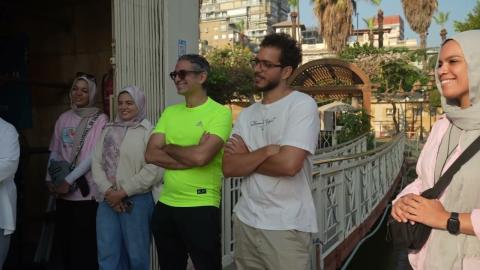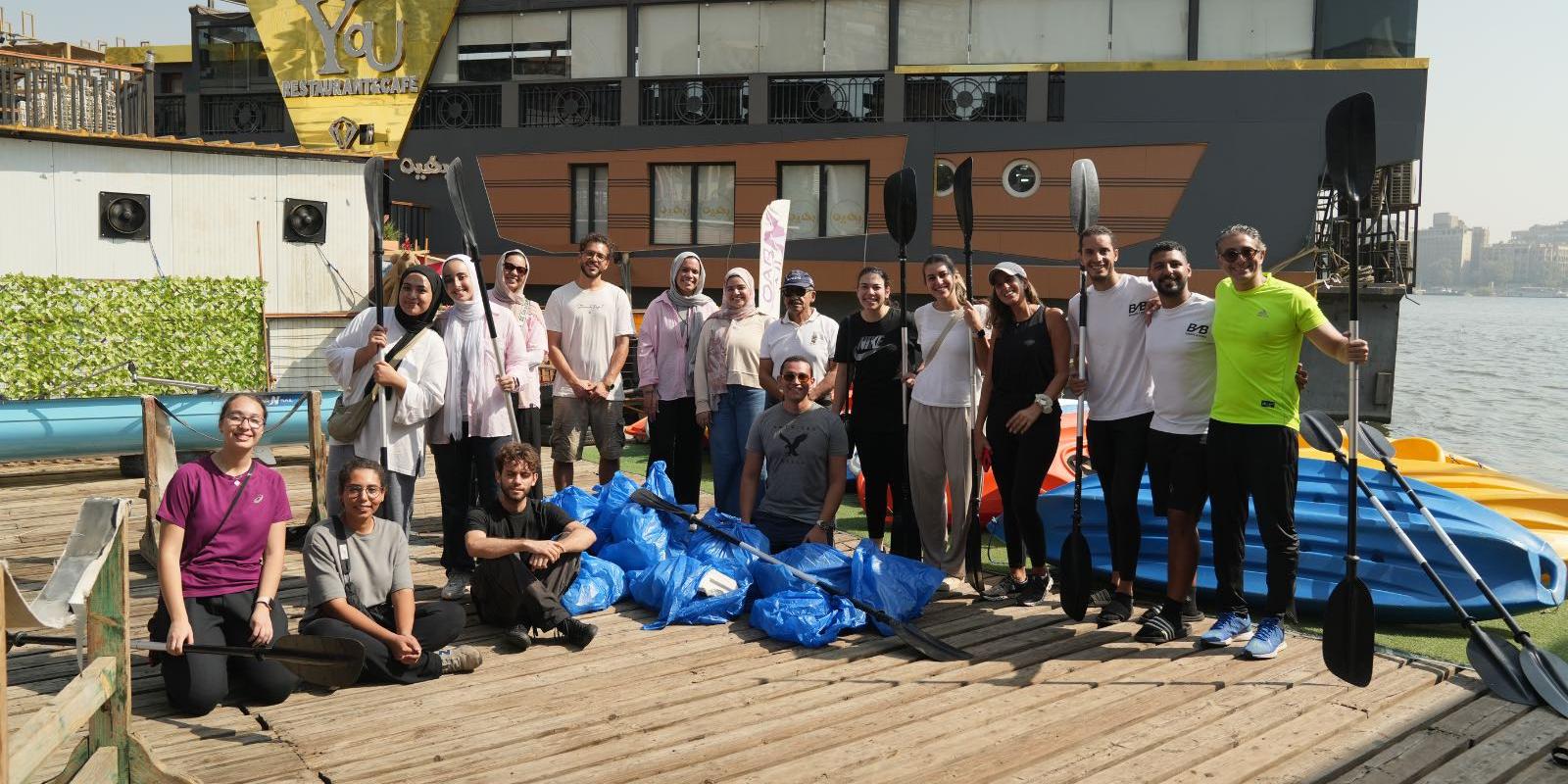
Clean Up and Build Up: Architecture Students Design Sustainable Solutions for a Greener Cairo
In the Urban Design Studio course, taught by Momen El-Husseiny, assistant professor of architecture and urban design, and Abeer El-Shater, adjunct faculty in the Department of Architecture, students engaged hands-on with the local community of fishermen and farmers at Qursaya Island, which lies along the Nile River. The students created urban design master plans that made use of recycled materials to create eco-friendly building models for Cairo and empowered the island’s residents to be self-sufficient and resilient.
Architecture Students Create Sustainable, Community-Based Urban Design Solutions for a Greener Cairo
From the depletion of fish to the rise in plastic waste and groundwater levels on the Nile, students were exposed to the challenges faced by the marginalized communities in Qursaya Island. They worked closely with local partners such as VeryNile to clean the Nile River and Qursaya’s community kitchen, Shewka-wa-Megdaf (Fork and Paddle), which creates food menus from crops grown by the farmers on the island.
With boats as the only means of transportation to and from the island, residents don't have easy access to basic services, especially in emergency situations. Among the designs proposed by students were a corniche along the Nile with new ports and emergency access points, clinics to address the lack of healthcare infrastructure, a market area for recycling and sustainable practices, and a qahwa (traditional cafe) that would serve as a social hub for building community connections.
“These ideas emerged in response to the pressing challenges faced by the community, including water pollution, energy shortages and difficulties in accessing food and goods. We also observed the excessive plastic waste in the Nile, which we aimed to transform into useful products to enhance the island’s environment."
“The students had to think creatively to balance environmental preservation with sustainable urban development,” said El-Husseiny. “Urban design goes beyond creating spaces to developing culturally sensitive and environmentally sustainable solutions that address real-world issues through collaboration and a deep understanding of the communities we serve.”
One impactful initiative involved students participating in urban sports, namely kayaking on the Nile with Boards and Boats to collect plastic waste alongside local fishermen, who have resorted to recycling waste as a method of sustenance as fish populations continued to decline over the years. “Our goal was to illuminate Qursaya through the concept of a pixel, which consists of units made from recycled plastic, while connecting our design solutions to the Food, Water and Energy Nexus,” said Shehab Elbokl, architecture senior. “These ideas emerged in response to the pressing challenges faced by the community, including water pollution, energy shortages and difficulties in accessing food and goods. We also observed the excessive plastic waste in the Nile, which we aimed to transform into useful products to enhance the island’s environment. Our ability to propose convincing solutions relied heavily on our engagement with the community.”
"The course challenged me to critically examine Western-centric urban planning theories and consider alternative approaches that are more responsive to the specific needs and contexts of different communities.”
Nile Cleanup
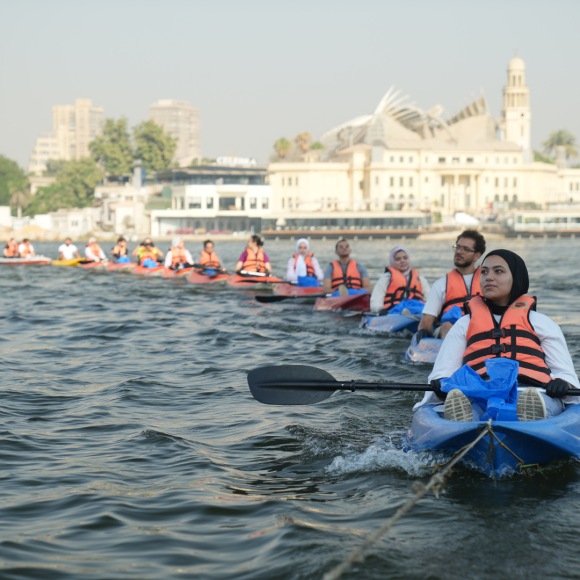
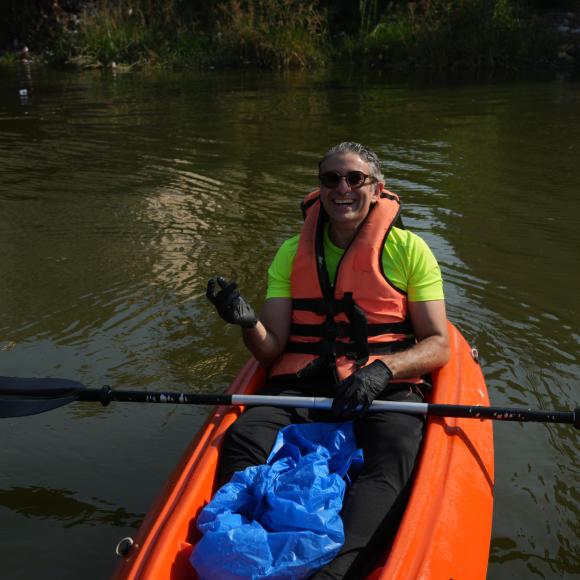
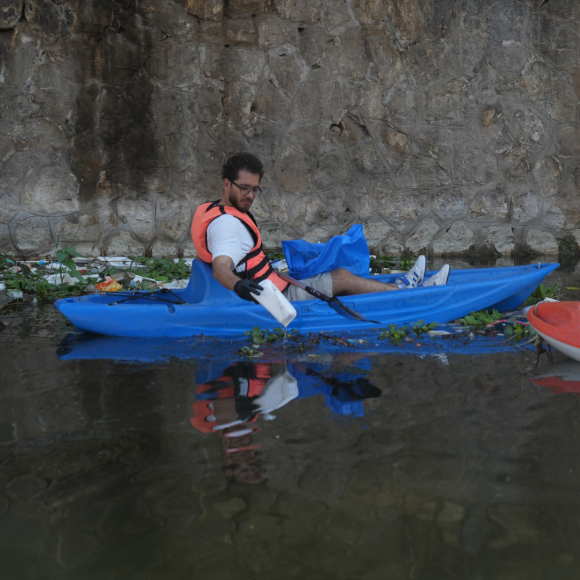
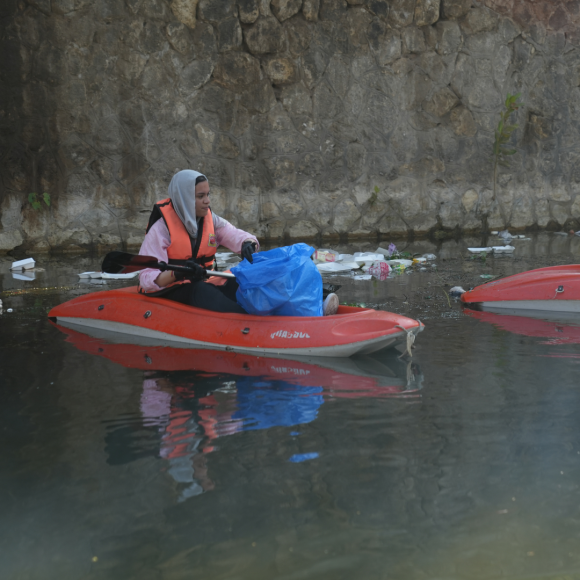
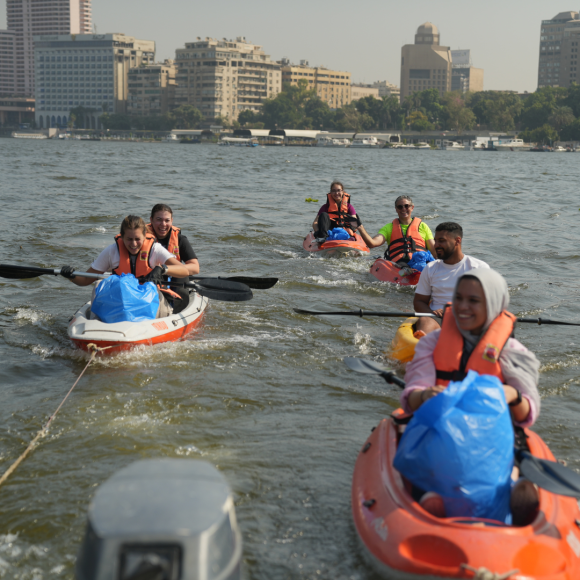
In order to truly understand community needs, students embraced an ethnographic approach that included firsthand research, day and night analysis, and sharing countless cups of tea with local residents. “These informal interactions were as important as the formal design work produced by students because they provided an insider’s perspective on the lives of the people for whom the designs are meant to serve,” said El-Husseiny.
“Receiving community feedback helped us iterate and improve [our projects[ until the final jury [day] when we put smiles on the faces of the people of Qursaya."
For the students, empathy was at the core of their experience. “The concept of "designing for the people" quickly became the heart of my approach as I worked on the master plan for Qursaya Island, but it didn’t stop there. I realized that designing with the people was the key,” said Gloria Hanna, architecture senior.
Echoing the same sentiment, Mariam Azmy, architecture senior noted, “Our site visits to Qursaya were unlike any other. Instead of simply observing the built environment, we immersed ourselves in the community. We conducted interviews with local residents, interacted with different stakeholders such as fishermen and farmers, and gained a deep understanding of the unique challenges and opportunities facing the island. I was particularly struck by the community’s resilience and eagerness to embrace change. They were not afraid to explore new ideas and actively sought solutions to improve their livelihoods. The course challenged me to critically examine Western-centric urban planning theories and consider alternative approaches that are more responsive to the specific needs and contexts of different communities.”
In the Urban Studies Lab at AUC Tahrir Square, the students had an interim midsemester review with the community to present the progress on their projects, "striking a balance between people’s needs and a student-led sustainable future vision with tactical design approaches to the problems faced in Qursaya," El-Husseiny said.
“This course truly changed me. What I’ve learned is that urban design is ... about living [people's] life, experiencing their surroundings, listening to their everyday conversations and then crafting a solution."
At the end of the course, the students developed master plans that were presented to a local jury and community residents. The plans focused on creating a sustainable and empowering lifestyle for the residents of Qursaya Island through a number of measures: environmental conservation through Nile clean-ups with VeryNile and waste management systems like recycling and composting; sustainable agriculture with organic farming and community gardens to encourage self-sufficiency; renewable energy solutions such as solar panels and wind turbines; eco-friendly transportation, such as bicycle paths and electric boats to reduce pollution and traffic congestion; community engagement and education through sustainability workshops and eco-cultural events; and economic opportunities via eco-tourism and support for local artisans producing upcycled and organic goods.
“This experience made me more socially responsible and aware of applying Sustainable Development Goals not only on Qursaya Island but in Egypt as a whole,” said Taysseer Elrefaie, architecture senior. “Receiving community feedback helped us iterate and improve [our projects[ until the final jury [day] when we put smiles on the faces of the people of Qursaya. The course was both enriching and exciting.”
Sustainable Solutions
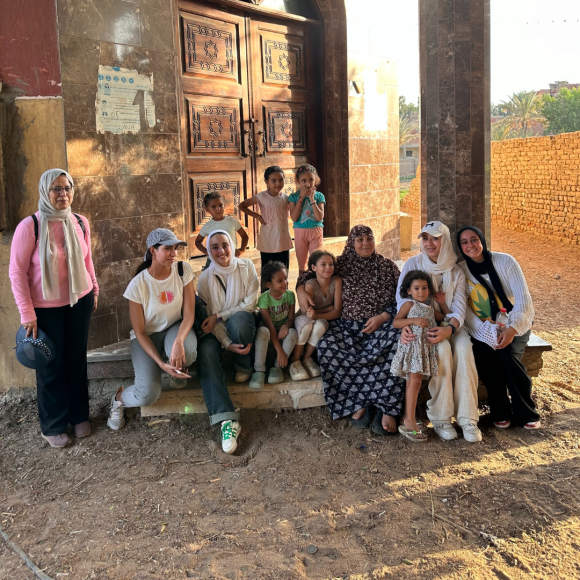
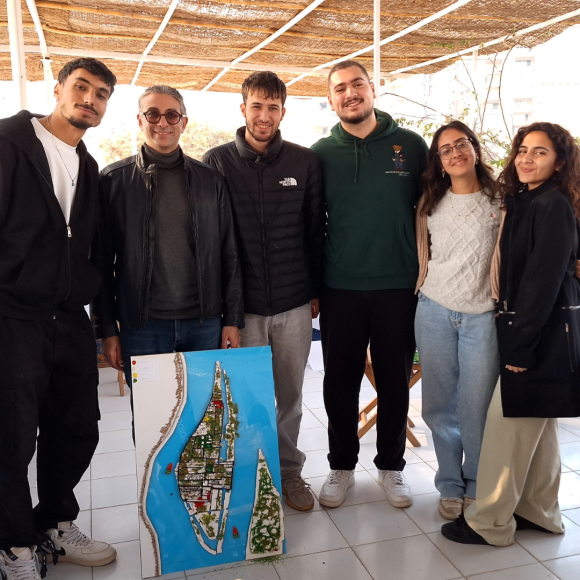

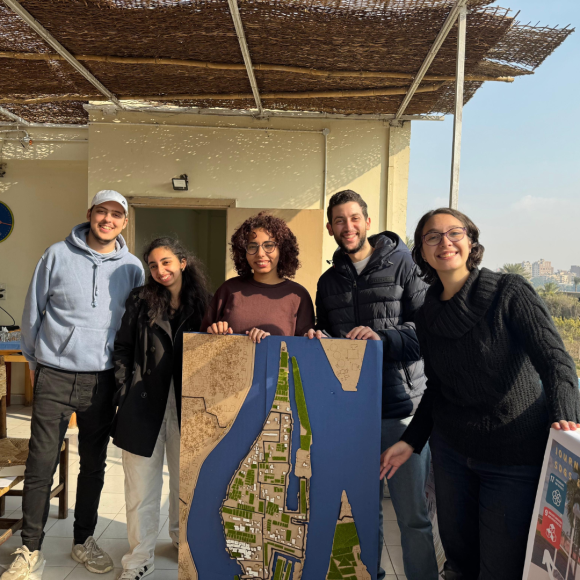
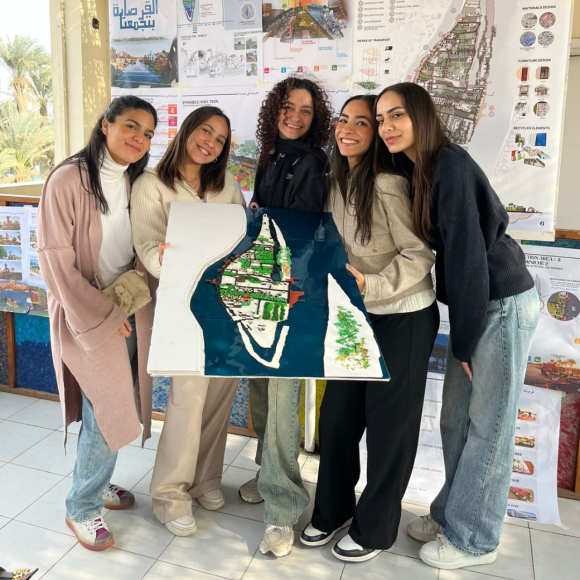
The course instilled in students a lifelong commitment to sustainability and community-based, participatory design solutions. “I am inspired to continue working with Very Nile to develop a community seed bank project, which will not only enhance food security for the island but also provide an opportunity to empower local farmers and preserve traditional agricultural practices,” said Azmy. “I was initially drawn to architecture by a desire to understand people’s needs and translate those needs into meaningful and impactful designs. This course provided the perfect platform to put this philosophy into practice.”
For the students, the impact is long-lasting. “This course truly changed me,” said Hanna. “What I’ve learned is that urban design is a blend of psychology and creating spaces that cater to people’s needs — truly giving them what they require, not what we think they need as designers. It’s about living their life, experiencing their surroundings, listening to their everyday conversations and then crafting a solution. The solution may often be simple, but as a designer, it’s your job to execute that solution in the smartest way possible. Until I visited and spoke with the kind-hearted people on the island, I hadn’t fully understood how strong a bond people can have with their land and how it shapes their mindset.”
“I was initially drawn to architecture by a desire to understand people’s needs and translate those needs into meaningful and impactful designs. This course provided the perfect platform to put this philosophy into practice.”
The course also broadened students’ understanding of different living conditions in society. “This experience encouraged me to look beyond my own life and appreciate the diverse realities that exist,” said Nayera Essam, architecture senior. “I will now be attuned to the unique social, cultural and environmental factors that shape a community and strive to create designs that are sensitive to and respectful of these factors. After taking the course, I see the city with a newfound appreciation for its intricate layers and hidden stories.”
